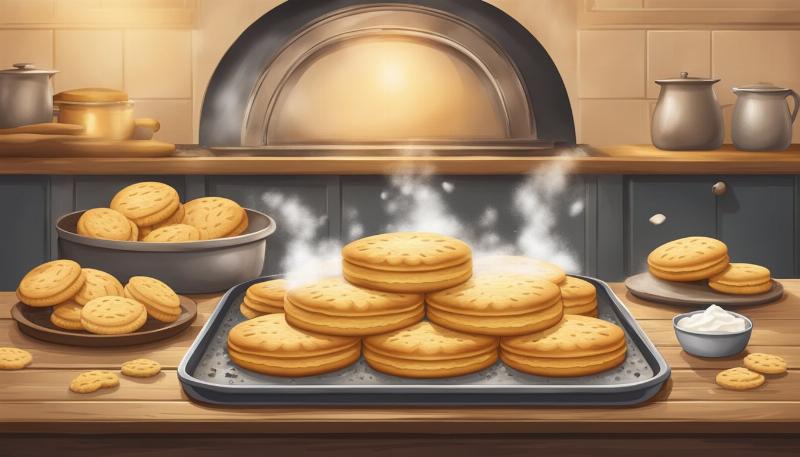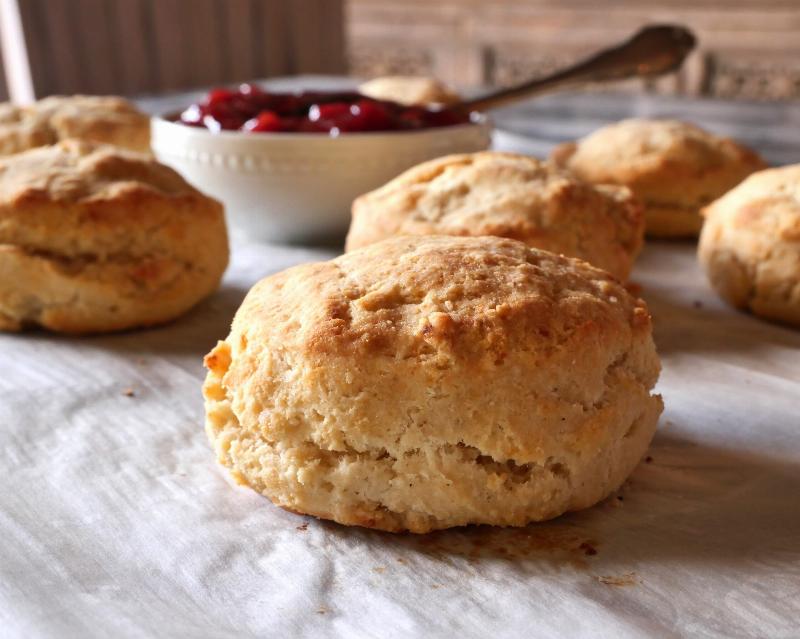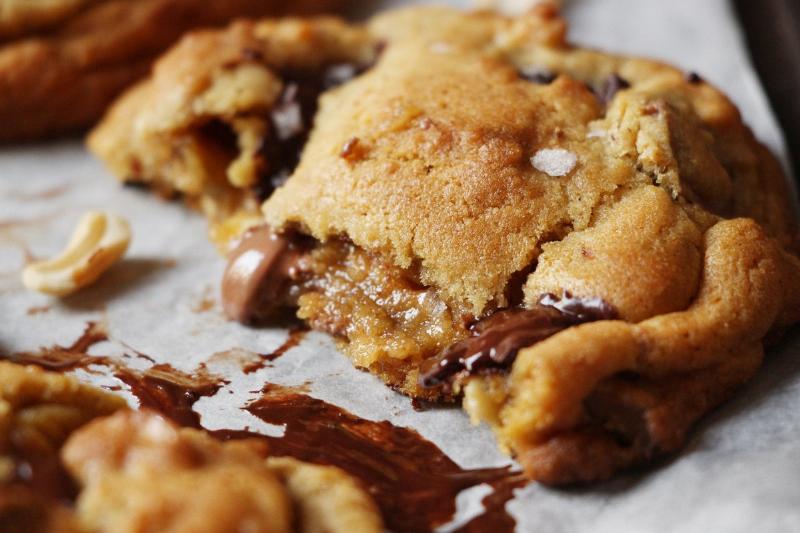Making fluffy biscuits might seem like a culinary feat reserved for seasoned bakers, but with the right technique and a dash of patience, anyone can achieve biscuit perfection. This guide will equip you with the knowledge and steps to create biscuits so light and airy, they practically melt in your mouth.
Table Of Contents
- Understanding the Science Behind Fluffy Biscuits
- Gathering Your Ingredients: Quality Matters
- Mixing the Dough: The Gentle Touch
- Shaping and Baking: The Final Touches
- Serving and Enjoying Your Fluffy Biscuits
- Fluffy Biscuit Variations: Exploring New Flavors
- Troubleshooting Common Biscuit Problems
- Conclusion: Mastering the Art of Fluffy Biscuits
- FAQ
Understanding the Science Behind Fluffy Biscuits
The secret to fluffy biscuits lies in the delicate balance of ingredients and technique. It’s all about creating a light and airy texture by trapping air within the dough. Overmixing develops gluten, resulting in tough biscuits, while undermixing leads to a crumbly texture. The key is to find that sweet spot—just enough mixing to combine the ingredients without overworking the dough. Cold ingredients, like butter and buttermilk, are also crucial, as they prevent the gluten from developing too quickly and help create flaky layers.
Gathering Your Ingredients: Quality Matters
Like any baking endeavor, the quality of your ingredients directly impacts the final product. For truly fluffy biscuits, opt for high-quality flour, preferably a low-protein all-purpose flour. Fresh baking powder is a must – make sure yours isn’t expired! And while it may be tempting to substitute, using cold, unsalted butter and cold buttermilk makes all the difference. These ingredients contribute not only to flavor but also to the desired texture.
 Cold Ingredients Essential for Fluffy Biscuits
Cold Ingredients Essential for Fluffy Biscuits
Mixing the Dough: The Gentle Touch
The mixing process is where the magic happens. Start by whisking together the dry ingredients: flour, baking powder, salt, and perhaps a touch of sugar if you prefer a slightly sweeter biscuit. Then, cut in the cold butter using a pastry blender or your fingertips until the mixture resembles coarse crumbs. This creates pockets of butter that will melt during baking, producing steam and contributing to the biscuit’s rise.
Next, gradually add the cold buttermilk, mixing gently until the dough just comes together. Avoid overmixing! A slightly shaggy dough is perfectly acceptable – in fact, it’s a sign you’re on the right track.
Shaping and Baking: The Final Touches
Turn the dough out onto a lightly floured surface and gently pat it into a 1-inch thick rectangle. Using a biscuit cutter or a sharp knife, cut out the biscuits. For extra fluffy biscuits, place them close together on an ungreased baking sheet. This encourages them to rise upwards rather than outwards.
Bake in a preheated oven until golden brown. The aroma that fills your kitchen will be irresistible!
Serving and Enjoying Your Fluffy Biscuits
Freshly baked biscuits are best enjoyed warm. Serve them with butter, jam, honey, or gravy. They’re the perfect accompaniment to any meal, from a simple breakfast to a hearty dinner.
 Fluffy Biscuits Served with Butter and Jam
Fluffy Biscuits Served with Butter and Jam
Fluffy Biscuit Variations: Exploring New Flavors
While the classic fluffy biscuit is undeniably delicious, don’t be afraid to experiment with different flavors and additions. Consider adding grated cheese, herbs, or spices to the dough for a savory twist. You can also incorporate dried fruits or chocolate chips for a sweeter treat. The possibilities are endless! Similar to the best baking powder reviews, exploring different brands can significantly impact your results.
Troubleshooting Common Biscuit Problems
Sometimes, despite our best efforts, biscuits don’t turn out as planned. If your biscuits are too dense, it could be due to overmixing or using warm ingredients. If they’re too crumbly, you may have undermixed the dough or not added enough liquid. Don’t despair! Baking is a learning process. Just as understanding review of King Arthur Baking Recipes can elevate your baking, so too can understanding common biscuit pitfalls.
Conclusion: Mastering the Art of Fluffy Biscuits
Making fluffy biscuits isn’t about complicated techniques or expensive equipment. It’s about understanding the fundamentals, using quality ingredients, and practicing the gentle touch. With a little patience and these tips, you’ll be baking batches of light, airy, and utterly delicious fluffy biscuits in no time. So gather your ingredients, embrace the process, and enjoy the rewarding experience of creating these delightful treats. Just like finding the best baking soda for baking reviews can improve your baking, understanding the science behind fluffy biscuits can take your baking to the next level.
 Basket of Freshly Baked Fluffy Biscuits
Basket of Freshly Baked Fluffy Biscuits
FAQ
-
Why are my biscuits flat? Overmixing or using old baking powder can cause flat biscuits. Ensure you’re using fresh baking powder and mixing the dough gently.
-
Can I use a different type of milk? Buttermilk is ideal for its acidity, but you can substitute with whole milk or a milk alternative combined with a tablespoon of lemon juice or vinegar.
-
How do I store leftover biscuits? Store leftover biscuits in an airtight container at room temperature for up to 3 days. You can also freeze them for up to 2 months.
-
What is the best flour for biscuits? Low-protein all-purpose flour is recommended for fluffy biscuits. Like with choosing the Best gluten-free baking mixes for quick desserts, the right flour is crucial.
-
Can I make biscuits ahead of time? You can prepare the dough ahead of time and bake it just before serving. Or, bake the biscuits completely and reheat them in the oven or microwave before serving.
-
Why are cold ingredients important? Cold ingredients help prevent the gluten from developing too quickly, resulting in a more tender and flaky biscuit.
-
How do I know when my biscuits are done? Biscuits are done when they are golden brown on top and cooked through. You can test for doneness by inserting a toothpick into the center – it should come out clean. Similar to review of 100 Great Recipes Baking, this recipe emphasizes the importance of visual cues for determining doneness.

Pingback: The Ultimate Guide to a Perfect Biscuit Recipe with Butter - Bestbaking Recipes